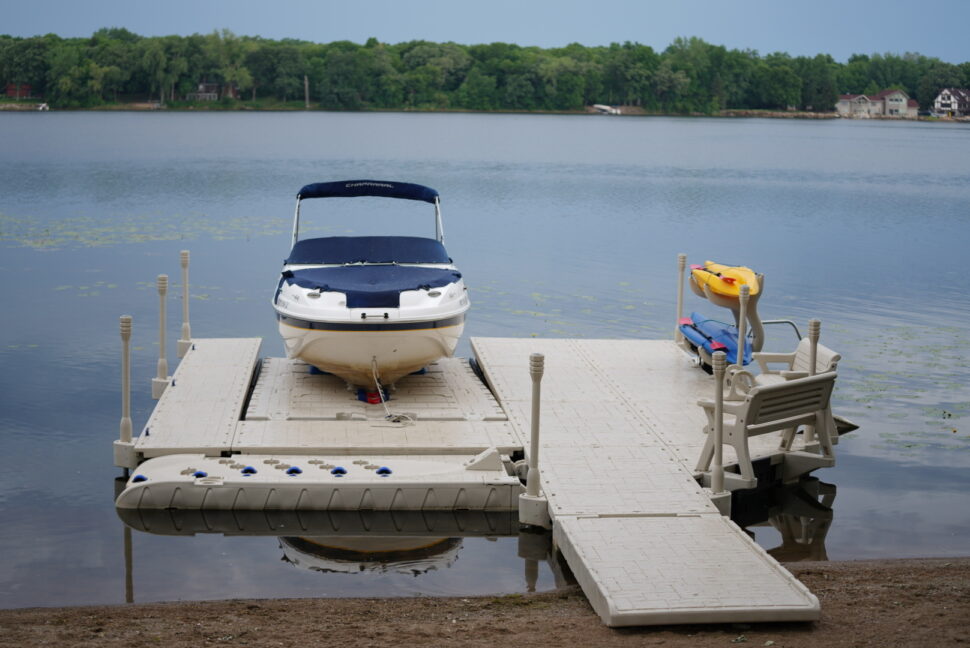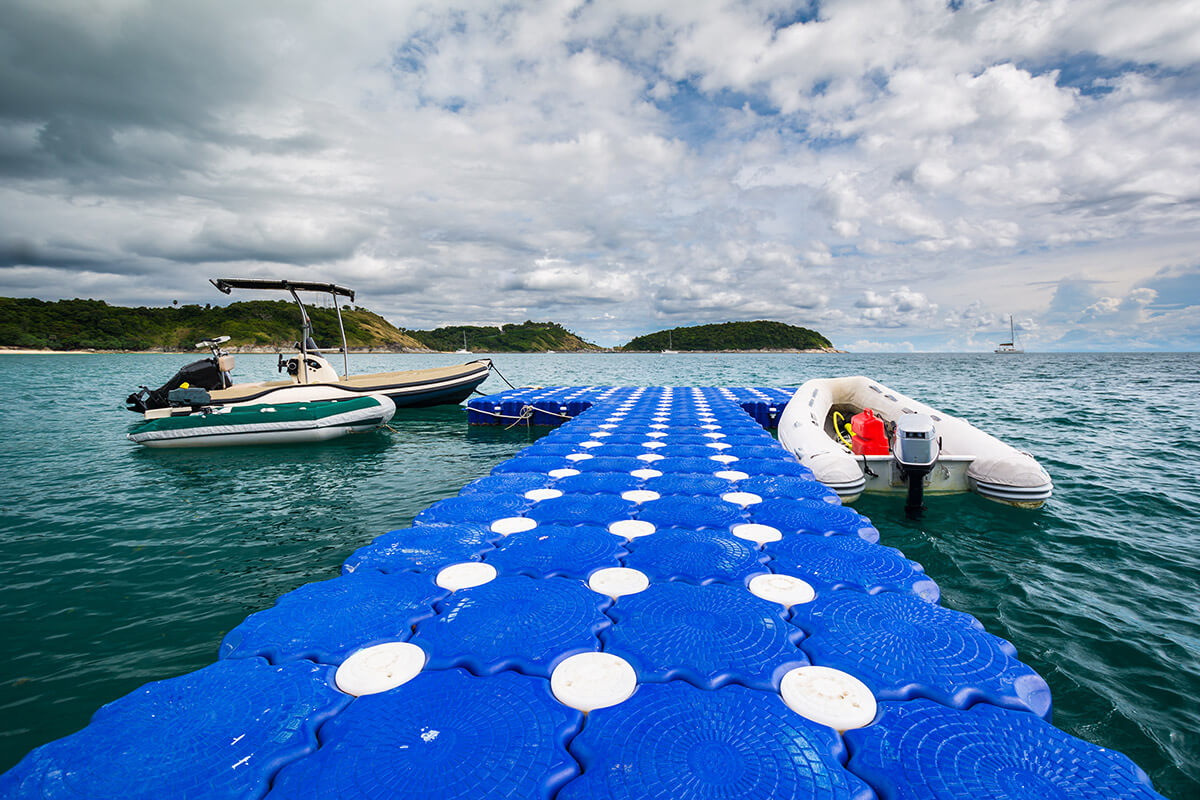Cutting-edge Floating Docks: The Future of Waterside Gain Access To and Entertainment
Develop the Perfect Docking Option With Floating Docks
Floating docks present a versatile solution for a variety of maritime requirements, adapting effortlessly to rising and fall water degrees and varied vessel types. Their modular nature permits fast installation and moving, yet the choice of ideal materials and style functions is critical for ensuring both capability and aesthetic allure. As we check out the vital components that add to the efficiency of floating docks, numerous key elements concerning stability and maintenance will emerge, increasing concerns regarding exactly how to maximize your docking experience. The subsequent discussion will brighten these vital considerations.

Advantages of Floating Docks
Floating docks deal countless benefits that make them an excellent choice for numerous maritime applications. Unlike taken care of docks, floating docks surge and fall with the tide, ensuring consistent access for vessels.
Furthermore, floating docks are typically simpler and quicker to install compared to typical fixed structures. Their modular design enables simple setting up and disassembly, helping with upkeep and relocation when necessary. This adaptability is especially useful for momentary applications or in atmospheres where conditions might change.
Floating docks additionally tend to be more eco friendly, as they minimize disturbance to the seabed and bordering aquatic ecological communities. Their resilient nature lowers the threat of damage to aquatic life, promoting a much healthier setting. In addition, these docks can be personalized to accommodate different vessel dimensions, making certain that they satisfy specific functional demands - floating dock company.
Inevitably, the mix of adaptability, convenience of setup, and ecological factors to consider makes floating docks a very reliable remedy for a vast array of maritime needs.
Picking the Right Materials
Choosing the appropriate products for floating docks is crucial to make certain durability, durability, and stability. The selection of materials directly influences the dock's efficiency in various environmental conditions, consisting of exposure to water, sunlight, and possible wear from aquatic website traffic.
Typical materials used for floating docks consist of light weight aluminum, timber, and high-density polyethylene (HDPE) Aluminum is light-weight, corrosion-resistant, and calls for minimal upkeep, making it an outstanding selection for durability. Nevertheless, its preliminary expense can be greater contrasted to other products.
Wood, while aesthetically enticing and providing a conventional appearance, can be vulnerable to rot and insect damage if not effectively dealt with. Utilizing pressure-treated wood or normally resilient varieties like cedar or redwood can minimize these concerns.
HDPE is a preferred choice due to its resistance to UV rays and chemicals, along with being ecologically friendly. dock company. It is lightweight and offered in different shades, enabling for customization
Inevitably, the ideal material selection will certainly depend on certain needs, consisting of budget, preferred aesthetic appeals, and ecological factors to consider. Mindful assessment of these factors will cause a resistant and successful floating dock service.
Layout Factors To Consider for Security
When making floating docks, making certain security is a fundamental element that can substantially affect their capability and safety and security. Security in floating dock design is influenced by numerous variables, consisting of buoyancy, weight circulation, and the setup of elements.
Weight distribution is crucial; uniformly dispersing lots across the dock protects against turning and improves security. Bigger layouts can provide increased stability, especially in harsh water conditions, while longer docks might require added supports to protect against drooping.
An additional crucial factor to consider is the environmental Read More Here influence, consisting of wave action and wind. Including attributes such as sidewalls or skirting can assist reduce the impacts of ecological pressures, preserving stability in negative problems. Ultimately, a combination of thoughtful layout, product selection, and understanding of ecological aspects will generate a drifting dock that satisfies both security and security requirements.
Setup Tips and Strategies

Following, secure the necessary licenses and stick to regional guidelines, which might dictate setup methods and ecological factors to consider. Involve a certified specialist experienced in floating dock setups if called for. Usage top notch materials made for marine atmospheres to enhance toughness and durability.
When positioning the dock, straighten it parallel to the coastline to promote very easy access. Make certain that the anchoring system is robust, using cinder block or helical supports to maintain the dock against wind and wave action. It's essential to make up seasonal water degree fluctuations, consisting of prospective ice movement in colder climates.
Throughout the installation, double-check the dock's floatation and stability prior to finalizing the anchoring. Routinely examine the installment for any type of indications of wear or damage. By adhering to these pointers and techniques, you can attain a protected, functional, and aesthetically pleasing floating dock installation that fulfills your requirements.
Maintenance and Treatment Standards
Preserving and caring for floating docks is critical to extending their life expectancy and making certain risk-free usage. Routine evaluations ought to be carried out to determine any kind of signs of wear, damage, or marine development. Look for fractures, loosened installations, or stained locations on the dock's surface, as these concerns can endanger architectural stability.
Cleansing is vital. Use a stress washer to remove algae, barnacles, and debris, which can gather over time. For stubborn development, take into consideration eco-friendly cleansing representatives that won't damage aquatic life.
Furthermore, examine the mooring lines and Website supports often to guarantee they are protected and complimentary from corrosion. Change any torn or harmed lines without delay to maintain stability.
During severe weather, such as tornados or freezing conditions, take preventive measures. Protect the dock with extra mooring lines and, if feasible, eliminate any kind of detachable parts to avoid damage.
Final Thought
In verdict, the application of floating docks provides a versatile and efficient docking service ideal for numerous maritime applications. With correct installation and regular maintenance, floating docks can supply reliable and trusted docking experiences for find more info a broad range of vessels.
As we explore the crucial elements that add to the efficiency of floating docks, several crucial elements concerning stability and upkeep will arise, elevating concerns regarding exactly how to maximize your docking experience. Unlike taken care of docks, floating docks rise and loss with the tide, guaranteeing consistent availability for vessels.When creating floating docks, ensuring security is a basic element that can significantly affect their capability and safety. Security in floating dock design is affected by various variables, including buoyancy, weight distribution, and the arrangement of elements. Eventually, a combination of thoughtful design, product option, and understanding of environmental variables will certainly produce a drifting dock that fulfills both security and safety and security requirements.